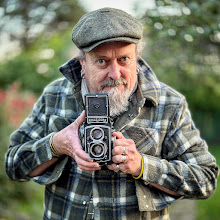When it comes to model trains whilst the day jobs of photography and broadcast telly embrace the latest in technology, I have in contrast never been happy with model railway ‘tech’, having a fear of wires, controllers and all the bits underneath the baseboard that make these models of ours move to some kind of order. I am a Luddite, in fact I am the father of Luddite, being even more tech-sceptical than the most Luddite of Luddites when it comes to toy chuffers.
Given the choice, I am far happier with a paintbrush that a soldering iron, if only for the fact that if I get paint on clothes it may well wash out, but a soldering iron will painfully burn me and make holes in my attire. It does similar things to carpets, so much so that the spare room has a strategically placed rug to hide that molten burn created by me dropping a soldering iron into the cheap synthetic carpets left by the previous owners.
What’s all this got to do with DCC? Well to be honest DCC has never really interested me, certainly not enough to make me want to splash out on such. But because one of my jobs is to visit people with wonderful trainsets, my pals at the magazine have been slowly slipping me bits of DCC stuff to me to try to motivate me into understanding a little more about some of the modellers I visit who increasingly have ‘gone DCC’.
Looking back, this all started off with the loan a ‘Lenz 100’, which I must admit has been sat in my loft since we moved a couple of years ago, the Lenz sounding more like a make of East German taxi than something to do with toy chuffers.
Then the day before yesterday, having all but totally forgotten about that box, I was given a Bachmann Class 24 with built in sound for ‘familiarization purposes’, the thought I think being that ‘it will help me bond with the readers and understand their needs’.
Moving on 24 hours, I’m sat there looking like a small child on Christmas Day with a length of track, a shiny loco, various electronic bits that look like the immobiliser from that East German taxi, and some rather drab wordy looking manuals which look like they’re aimed at software developers rather than Luddite man.
My wife tends to operate the Sky + box at home, for to me it’s a reminder of much of the second rate TV programming I tend to get involved with when not behind a camera. She saw me baffled by Lenz 100 East German Taxi immobiliser instructions, and because woman actually read the instructions she got the loco running to and fro along the yard of track with the same dexterity seen when she flicks between Eastenders and Big Brother whilst recording Big Fat Gypsy Weddings all at the same time.
There was still the problem of the sound, the loco sounding no different to any other loco I’ve played with in the last 30 or so years. The Lenz instructions were a little vague in this area, so they were put back in the box as my wife was engrossed in CSI New York. Next I did ‘the Google thing’, but nothing there was really of much use, though I did find out a little about Soviet Army infrared low light lens technology from 1981 suggesting I’d used the wrong keywords.
Because some of this DCC thing is about getting to know our readers a little better, as well as hopefully having a little more insight as to why I don’t like running trains, what better than ask one of these fine souls who for some reason want to ‘like’ my smoke and mirrors approach to model railways? Some time ago I set up a Facebook page to share my modelling activities and to see other model maker’s work, so Thursday evening posted words to the effect of ‘help I haven’t a clue’. Within a few minutes I was in possession of just the numbers required to punch in to get the loco horn to “mee-marr” and the sound of that Sulzer chortle so familiar of this class. Marvelous - thank you!
As a photographer it might be thought that there’s little advantage of DCC, but of course it allows loco lights to be lit without the loco moving as the above photo demonstrates. In the past I’d have slowly increased the power until the lights glowed, a fine balance to which anyone will know who runs DC is just as the loco starts to move. Gone are blurred locos which moved during the exposure or some obstacle just out of frame to stop the loco moving.
As for the sound, I wish I’d had it years ago when we shared walls with that family from hell, I could have blocked out their trashy 4am music, or tooted the loco horn several times just as I thought they’d finally nodded off at 8am. Moving on and leaving evil thoughts well behind, I wonder what a SDJR 7F would sound like with a sound chip?

